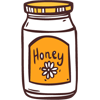To provide the best experiences, we use technologies like cookies to store and/or access device information. Consenting to these technologies will allow us to process data such as browsing behavior or unique IDs on this site. Not consenting or withdrawing consent, may adversely affect certain features and functions.
The technical storage or access is strictly necessary for the legitimate purpose of enabling the use of a specific service explicitly requested by the subscriber or user, or for the sole purpose of carrying out the transmission of a communication over an electronic communications network.
The technical storage or access is necessary for the legitimate purpose of storing preferences that are not requested by the subscriber or user.
The technical storage or access that is used exclusively for statistical purposes.
The technical storage or access that is used exclusively for anonymous statistical purposes. Without a subpoena, voluntary compliance on the part of your Internet Service Provider, or additional records from a third party, information stored or retrieved for this purpose alone cannot usually be used to identify you.
The technical storage or access is required to create user profiles to send advertising, or to track the user on a website or across several websites for similar marketing purposes.

 Raw Honey – Honey that retains the same composition as it existed in the beehive. Sometimes processed with minimal heat after extraction from the beehive and settling, or straining.
Raw Honey – Honey that retains the same composition as it existed in the beehive. Sometimes processed with minimal heat after extraction from the beehive and settling, or straining. Filtered Honey – A process that removes most pollen grains, air bubbles, and other fine particles that exist in raw honey. To be filtered, the honey is normally heated at 150 F – 170 F.
Filtered Honey – A process that removes most pollen grains, air bubbles, and other fine particles that exist in raw honey. To be filtered, the honey is normally heated at 150 F – 170 F. Strained Honey – Honey is moved through a mesh material to remove small particles. Pollen, minerals, and enzymes remain after this process.
Strained Honey – Honey is moved through a mesh material to remove small particles. Pollen, minerals, and enzymes remain after this process. Crystallized Honey – Known as granulated or candid honey. Some of the honeys glucose is crystallized, then reheated later to a liquid state.
Crystallized Honey – Known as granulated or candid honey. Some of the honeys glucose is crystallized, then reheated later to a liquid state. Pasteurized Honey – The honey is heated to 161 F to destroy yeast cells. Side effects of this process are a darkening to the color, the removal of enzymes, changes of taste and it even affects the smell.
Pasteurized Honey – The honey is heated to 161 F to destroy yeast cells. Side effects of this process are a darkening to the color, the removal of enzymes, changes of taste and it even affects the smell. Honeycomb – This is where the actual beehive honeycomb is extracted from the hive and cut into pieces with the honey still in the wax comb.
Honeycomb – This is where the actual beehive honeycomb is extracted from the hive and cut into pieces with the honey still in the wax comb. Dried Honey – Results is the honey becoming completely solid, non-sticky granules, commonly used on desserts.
Dried Honey – Results is the honey becoming completely solid, non-sticky granules, commonly used on desserts. Whipped Honey – This process is used to create a more spreadable product. Small crystals are created within the honey, instead of large crystals that are found in raw honey.
Whipped Honey – This process is used to create a more spreadable product. Small crystals are created within the honey, instead of large crystals that are found in raw honey.
 Ultrasonificated Honey – Honey that is processed using ultrasonification. Destroys yeast cells, inhibits crystallization, and slows fermentation. Honey can be processed at 95 F.
Ultrasonificated Honey – Honey that is processed using ultrasonification. Destroys yeast cells, inhibits crystallization, and slows fermentation. Honey can be processed at 95 F.